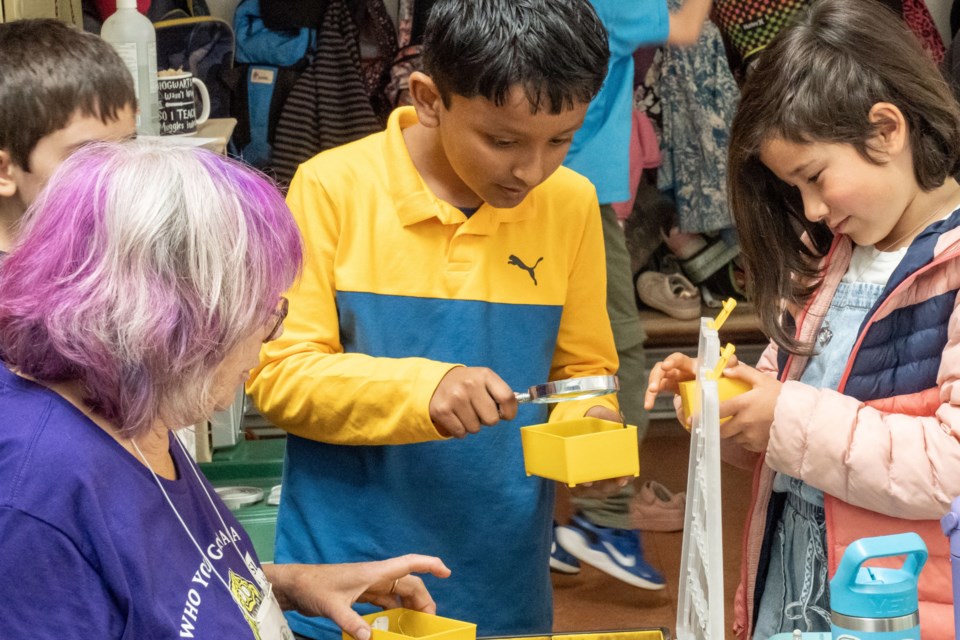Hundreds of Whistler elementary students will get up close with beetles, fungi and even slime moulds this week as the 19th annual Whistler BioBlitz returns from June 5 to 8.
Organized by the Whistler Naturalists, BioBlitz pairs school presentations with hard science. More than 500 students from Spring Creek, Myrtle Philip and the Whistler Waldorf School will take part in interactive sessions on topics ranging from animal tracks and pond life to plant-fungi interactions and food chains.
While school visits are a key focus, scientists will also spend their downtime combing through Whistler’s forests, wetlands and snowmelt zones—documenting species as part of the Whistler Biodiversity Project, which now lists more than 5,000 native species.
Scott Gilmore, an entomologist who first came to Whistler BioBlitz a decade ago, is back again this year. He has made a tradition of attending alongside his son, who got hooked on slime moulds during last year’s event.
“He’s been coming with me for at least five years now,” Gilmore said. “It was at this BioBlitz last year he met the slime mould crew—he got to know them and learn. Since then, he’s been collecting and studying them on Vancouver Island.”
For Gilmore, watching his son mature into a curious and capable field naturalist has been one of the most rewarding parts of participating.
“It’s been fantastic to see him embraced and encouraged in his own interests,” he said. “It’s fun to share time and space in the field and watch him share his knowledge with others.”
Last year’s slime mould team identified 41 species, including three never before recorded in B.C. Their findings are now being incorporated into a new field guide set to be published by the Royal BC Museum.
Gilmore specializes in beetles and insects, and said Whistler’s forests never fail to surprise him.
“Every time I go to Whistler I find something I’ve never seen before,” he said. “I always find new ones.”
Species found during BioBlitz are carefully catalogued, with samples sent to the Royal BC Museum.
“With insects it’s hard to see in the field, but at home I mount them to a pin with data labels, look under a microscope, and use resources to identify them before sending them to the museum,” Gilmore explained. “It’s an important step—they can be there for hundreds of years.”
Beyond the science, Gilmore said BioBlitz is about inspiring curiosity, especially in children.
“They’re incredibly observant. If they meet someone passionate about these organisms who can tell them what they are and help them find different ones, that’s the starting point for their own adventures in nature,” he said.
The event also contributes meaningful data to help inform land-use and conservation decisions. Organizers say the scientific inventories conducted over the weekend provide an updated natural baseline for Whistler and help promote environmental awareness in the wider community.
With a team of local and visiting experts on hand—ranging from herpetologists (reptile and amphibian experts) and aquatic insect specialists to lichen and mushroom scientists—Whistler BioBlitz continues to be a celebration of biodiversity and the people working to understand and protect it.




